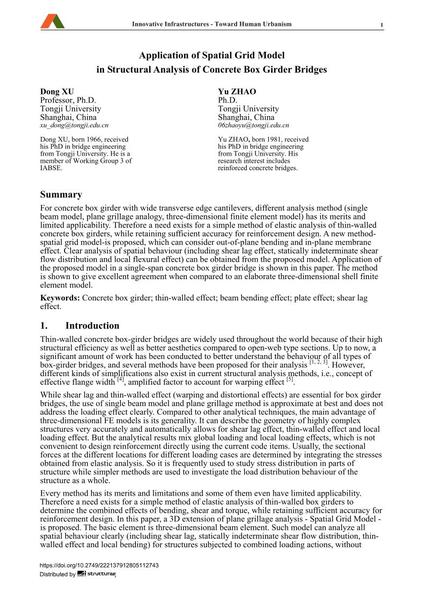Application of Spatial Grid Model in Structural Analysis of Concrete Box Girder Bridges

|
|
|||||||||||
Bibliographic Details
| Author(s): |
Dong Xu
Yu Zhao |
||||
|---|---|---|---|---|---|
| Medium: | conference paper | ||||
| Language(s): | English | ||||
| Conference: | 18th IABSE Congress: Innovative Infrastructures – Towards Human Urbanism, Seoul, Korea, 19-21 September 2012 | ||||
| Published in: | IABSE Congress Seoul 2012 | ||||
|
|||||
| Page(s): | 2009-2016 | ||||
| Total no. of pages: | 8 | ||||
| DOI: | 10.2749/222137912805112743 | ||||
| Abstract: |
For concrete box girder with wide transverse edge cantilevers, different analysis method (single beam model, plane grillage analogy, three-dimensional finite element model) has its merits and limited applicability. Therefore a need exists for a simple method of elastic analysis of thin-walled concrete box girders, while retaining sufficient accuracy for reinforcement design. A new method- spatial grid model-is proposed, which can consider out-of-plane bending and in-plane membrane effect. Clear analysis of spatial behaviour (including shear lag effect, statically indeterminate shear flow distribution and local flexural effect) can be obtained from the proposed model. Application of the proposed model in a single-span concrete box girder bridge is shown in this paper. The method is shown to give excellent agreement when compared to an elaborate three-dimensional shell finite element model. |
||||
| Keywords: |
concrete box girder thin-walled effect beam bending effect plate effect shear lag effect
|
||||
